Coming up with a great idea can be hard enough. Getting the idea adopted can be even harder. Why do some innovations change the world and others go nowhere?
The reasons are many. In Originals Adam Grant highlights one factor in the story of the American suffrage movement.
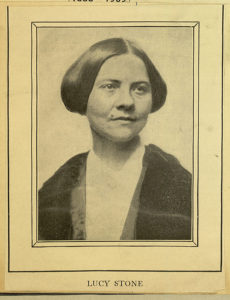 Lucy Stone launched the women’s rights movement in 1851, inspiring thousands to join the cause for women’s right to vote, work, receive an education, and own property. Susan B. Anthony and Elizabeth Cady Stanton were among her early followers. But after years of leading together, in 1869 Anthony and Stanton split from Stone, nearly causing the collapse of the movement. What happened?
Lucy Stone launched the women’s rights movement in 1851, inspiring thousands to join the cause for women’s right to vote, work, receive an education, and own property. Susan B. Anthony and Elizabeth Cady Stanton were among her early followers. But after years of leading together, in 1869 Anthony and Stanton split from Stone, nearly causing the collapse of the movement. What happened?
Anthony and Stanton were purists. They opposed the Fifteenth Amendment giving African Americans the right to vote because if women couldn’t vote, no other minorities should either. Stone instead built bridges to those favoring the amendment.
Stone also sought allies in an unexpected corner, in the family-values organization of the day—the Woman’s Christian Temperance Union (WCTU). The WCTU was conservative, largely made up of religious middle- and upper-class women who were unlikely to see Stone and her movement as upholding traditional values. Yet Stone forged an alliance by suggesting that the WTCU would have a hard time changing liquor laws if women couldn’t vote. The more radical-sounding “women’s right to vote” was reframed more moderately as a “home protection ballot.”
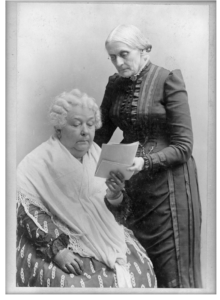 Anthony and Stanton were scandalized. But their differences didn’t stop there. “Stone was committed to campaigning at the state level; Anthony and Stanton wanted a federal constitutional amendment. Stone involved men in her organization; Anthony and Stanton favored an exclusively female membership. Stone sought to inspire change through speaking and meetings; Anthony and Stanton were more confrontational, with Anthony voting illegally and encouraging other women to follow suit.” (121)
Anthony and Stanton were scandalized. But their differences didn’t stop there. “Stone was committed to campaigning at the state level; Anthony and Stanton wanted a federal constitutional amendment. Stone involved men in her organization; Anthony and Stanton favored an exclusively female membership. Stone sought to inspire change through speaking and meetings; Anthony and Stanton were more confrontational, with Anthony voting illegally and encouraging other women to follow suit.” (121)
The extreme radicalism of some scared away the potential sympathy of many. Though Stanton sought reconciliation in 1872, by then Stone was too wary of her unpredictable sisters in the cause. It took passing the torch to a new generation of moderate radicals before women won the right to vote in 1920.
Change the world? Yes. With creative coalitions, with tempered radicalism, by reframing the new as something old. A hundred years ago, women showed us how it’s done.
———-
Photos: Library of Congress, Rare Book and Special Collections Division, National American Woman Suffrage Association Collection (Stone); Library of Congress,

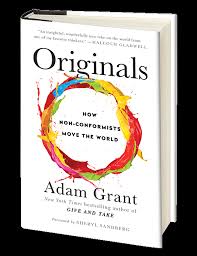
 Grant hooks us by putting two mysteries in front of us which we actively try to solve ourselves before the author reveals the answers. But he doesn’t stop there.
Grant hooks us by putting two mysteries in front of us which we actively try to solve ourselves before the author reveals the answers. But he doesn’t stop there.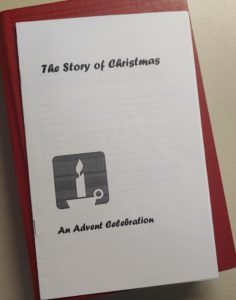 Once each December we have invited about twenty friends, neighbors, coworkers, and their children to our home for an evening. Since usually they don’t all know each other, we take a few minutes for everyone to introduce themselves and how they are connected to our household.
Once each December we have invited about twenty friends, neighbors, coworkers, and their children to our home for an evening. Since usually they don’t all know each other, we take a few minutes for everyone to introduce themselves and how they are connected to our household. In the middle we pause to let people share Christmas or holiday memories and what it all means to them. Some talk about family traditions and some about their faith experiences. The evening closes with dessert and coffee, sharing cookies and other treats that our friends have brought.
In the middle we pause to let people share Christmas or holiday memories and what it all means to them. Some talk about family traditions and some about their faith experiences. The evening closes with dessert and coffee, sharing cookies and other treats that our friends have brought. Secure endorsements from people who already have platforms. Then present those along with your proposal. These can be previously published authors, well-known speakers or bloggers, leaders in organizations related to the topic of your book, or professors at seminaries or colleges. If you know people like that, ask them to read your manuscript or proposal with an eye toward possibly offering a two- or three-sentence commendation should they find it worthwhile.
Secure endorsements from people who already have platforms. Then present those along with your proposal. These can be previously published authors, well-known speakers or bloggers, leaders in organizations related to the topic of your book, or professors at seminaries or colleges. If you know people like that, ask them to read your manuscript or proposal with an eye toward possibly offering a two- or three-sentence commendation should they find it worthwhile.  Sometimes I’d run from one part of the course to another, taking a shortcut, so that several times during a race I could yell encouragement to press on, to not let down, to remember their training. Once when I was dashing from one place to another, a student cheering for another school almost slammed into me. As he flew by in another direction, he said, “Sorry, Coach.” I’ve never felt prouder to be mistakenly identified.
Sometimes I’d run from one part of the course to another, taking a shortcut, so that several times during a race I could yell encouragement to press on, to not let down, to remember their training. Once when I was dashing from one place to another, a student cheering for another school almost slammed into me. As he flew by in another direction, he said, “Sorry, Coach.” I’ve never felt prouder to be mistakenly identified.
 Responses in both parts should be specific (an apt word choice or metaphor, an aspect of structure, a strong illustration, a good use of building drama, etc.). “Something I thought was strong was . . .” is a good way to begin.
Responses in both parts should be specific (an apt word choice or metaphor, an aspect of structure, a strong illustration, a good use of building drama, etc.). “Something I thought was strong was . . .” is a good way to begin.  Certainly gray lines can appear when it comes to, for example, “Was the writing persuasively argued?” That can lead to comments like, “Well, I wasn’t persuaded because I think X.” Soon we are diving into the deep waters of content.
Certainly gray lines can appear when it comes to, for example, “Was the writing persuasively argued?” That can lead to comments like, “Well, I wasn’t persuaded because I think X.” Soon we are diving into the deep waters of content. 
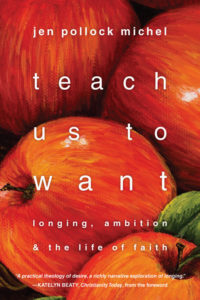
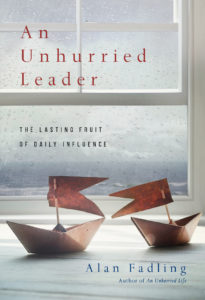
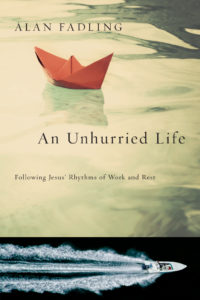 “
“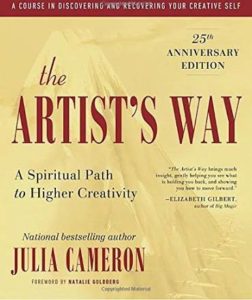
 Eventually something that finds its way into our morning pages may trigger and idea or project we want to pursue. That’s fine. We can work on it outside of our time set aside for morning pages, and that we can show to others for input if desired. But we never show others our morning pages themselves. A friend of mine, Bill, who didn’t think he was very creative undertook Cameron’s disciplines and started producing some remarkable poetry.
Eventually something that finds its way into our morning pages may trigger and idea or project we want to pursue. That’s fine. We can work on it outside of our time set aside for morning pages, and that we can show to others for input if desired. But we never show others our morning pages themselves. A friend of mine, Bill, who didn’t think he was very creative undertook Cameron’s disciplines and started producing some remarkable poetry.